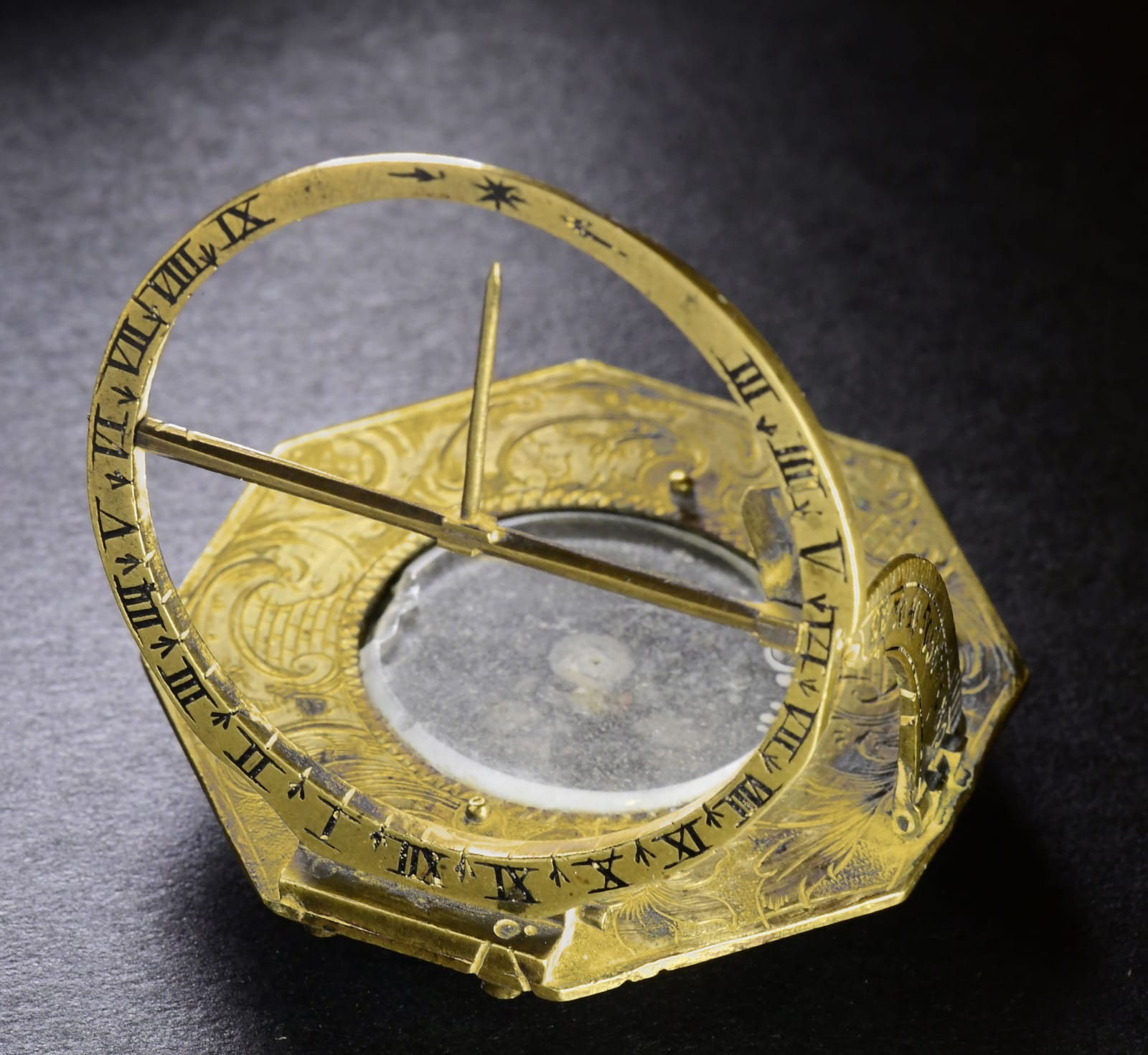Andreas Vogler (Augsburg ca. 1730 - 1800)
Hailing from a time when functionality did not necessary impede a beautiful design, this is a fine reminder that a well-curated cabinet of curiosities should contain some specimens of 'scientifica' too.
This is a beautiful example of an eighteenth-century so-called equatorial (meaning that the dial plate is parallel to the plane of the equator) pocket sundial. On the reverse of the compass well the names of the places and latitudes for which the dial is available are inscribed. The sundial is the work of the Augsburg-born watch- and compassmaker Andreas Vogler, about whose life we know surprisingly little. He was born ca. 1730 and from 1766 (his earliest known work) began producing pocket watches, sundials and compasses that are represented in many important public collections today, including a very similar sundial currently kept at the Metropolitan Museum of Art (accession number 03.21.40).
